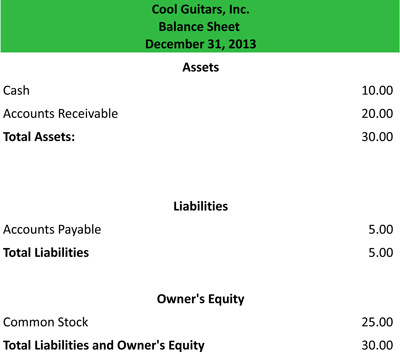Definition: A report form balance sheet is a balance sheet that presents asset, liability, and equity accounts in a vertical format. In financial reporting, there are two general formats for balance sheets: the account format and the report format.
What Does Report Form Balance Sheet Mean?
The account format presents the asset accounts on the left side and the liabilities and equity accounts on the right. The report format presents all the accounts vertically. Although both balance sheet formats are acceptable, the report form is much more popular.
Example
As the name implies, the report format looks more like a traditional report and is used more often in the general-purpose financial statements. Here is an example of a report form balance sheet.

Download this accounting example in excel.
As you can see, all of the accounts are listed in a vertical fashion. The report form has a traditional balance sheet heading with subtotals for each of the asset, liability, and equity accounts. GAAP offers a lot of flexibility with the accounts that can be listed or not listed on the balance sheet. For example, some companies list cash as one account and cash equivalents as another. Other companies combine these accounts into one cash and cash equivalents account.
In some ways the report format is easier to read than the account format because all the account totals are listed on the right side of the report. This is especially true for multiple comparative balance sheets. Although the balance sheet above is only for one year, it could easily be converted into a two-year comparative report by adding another column of numbers for an additional year.


